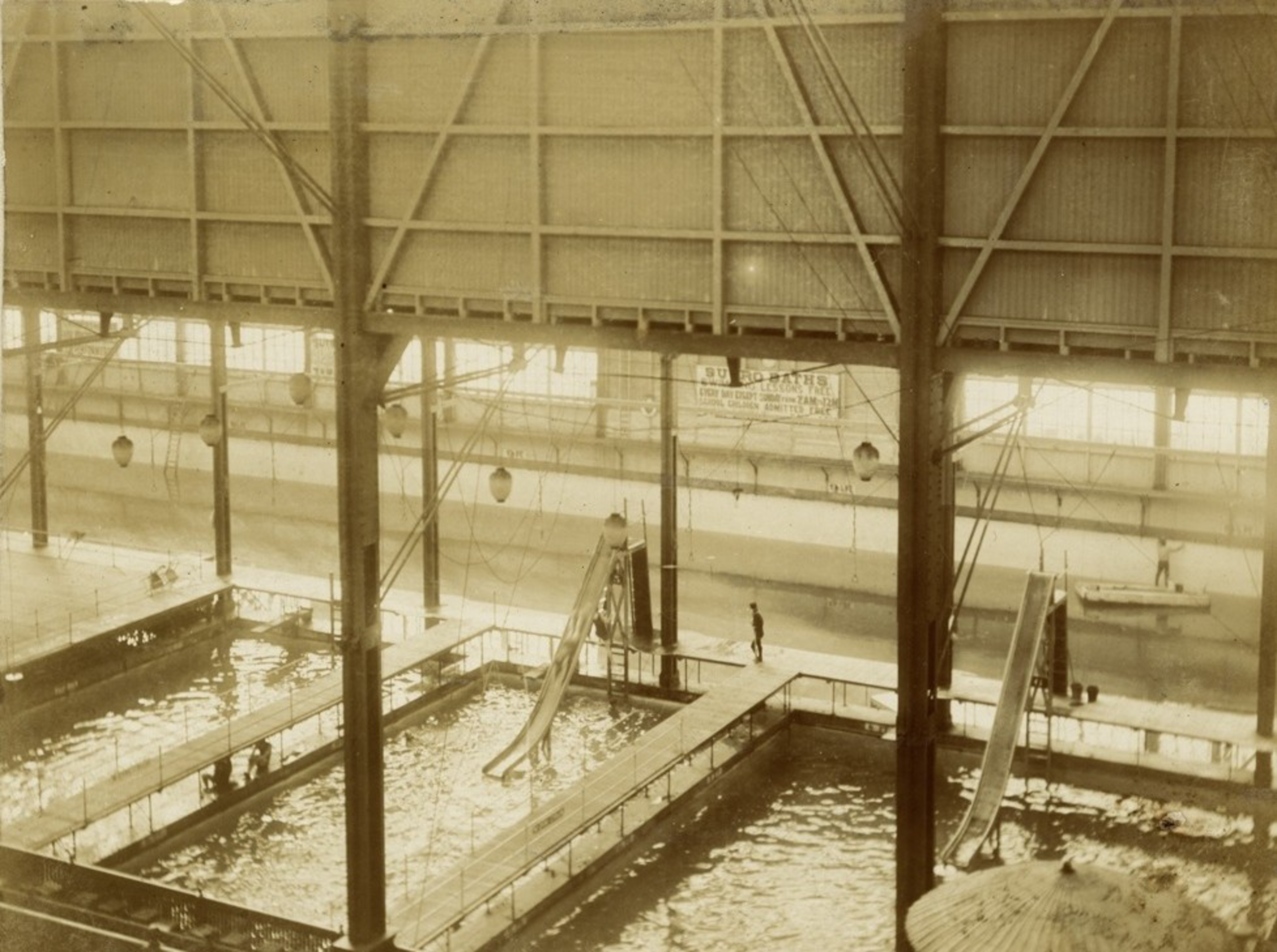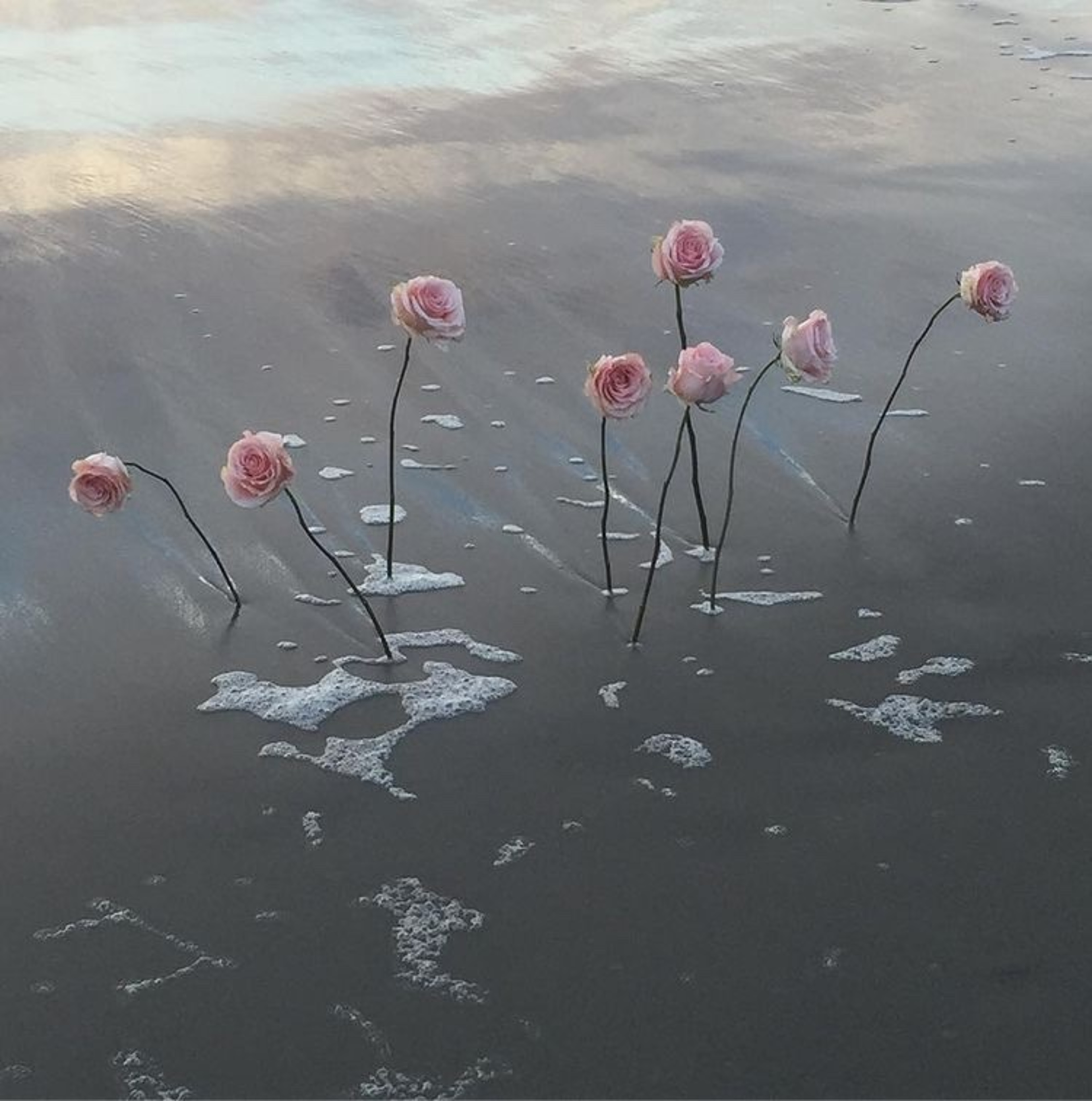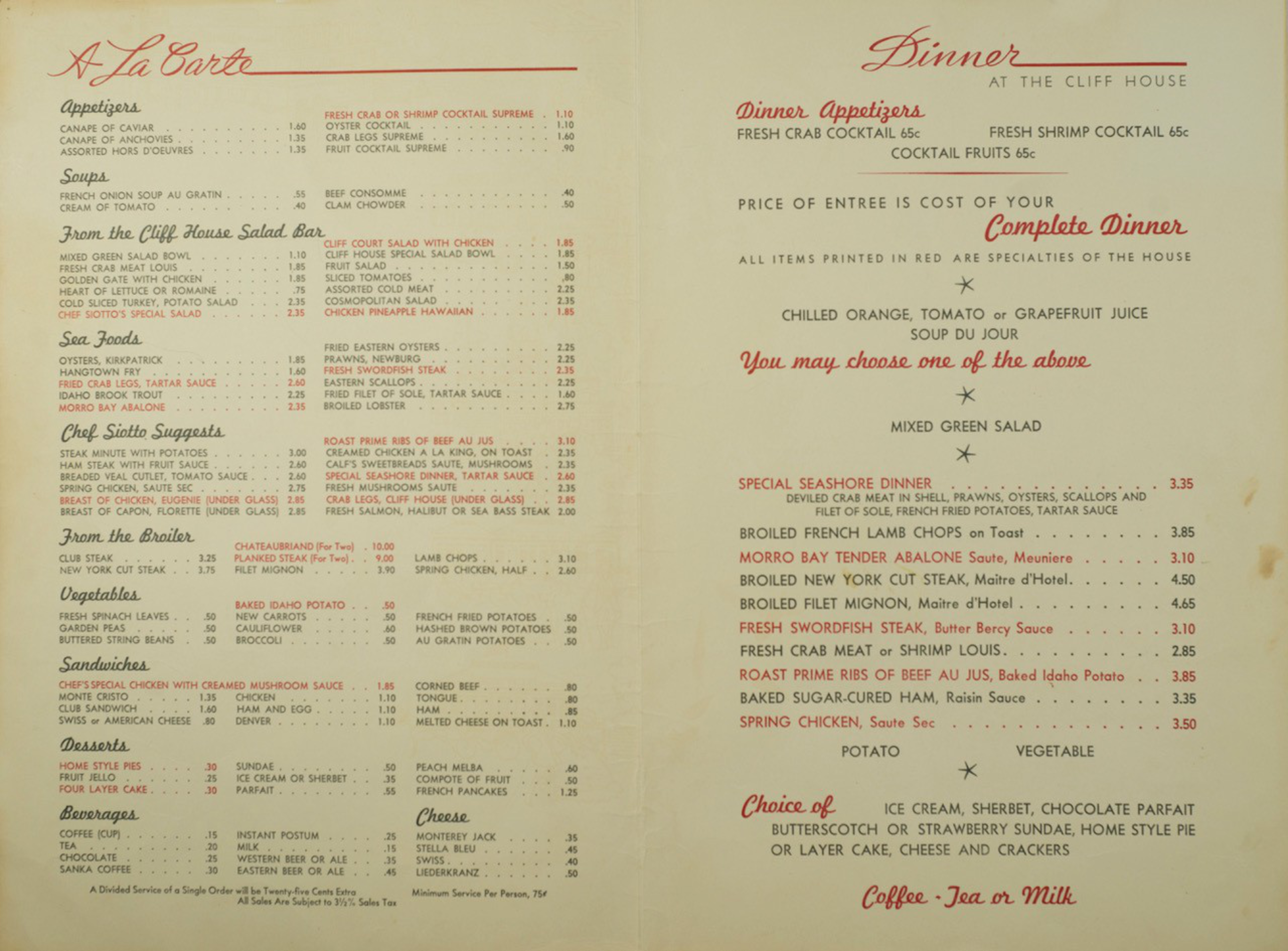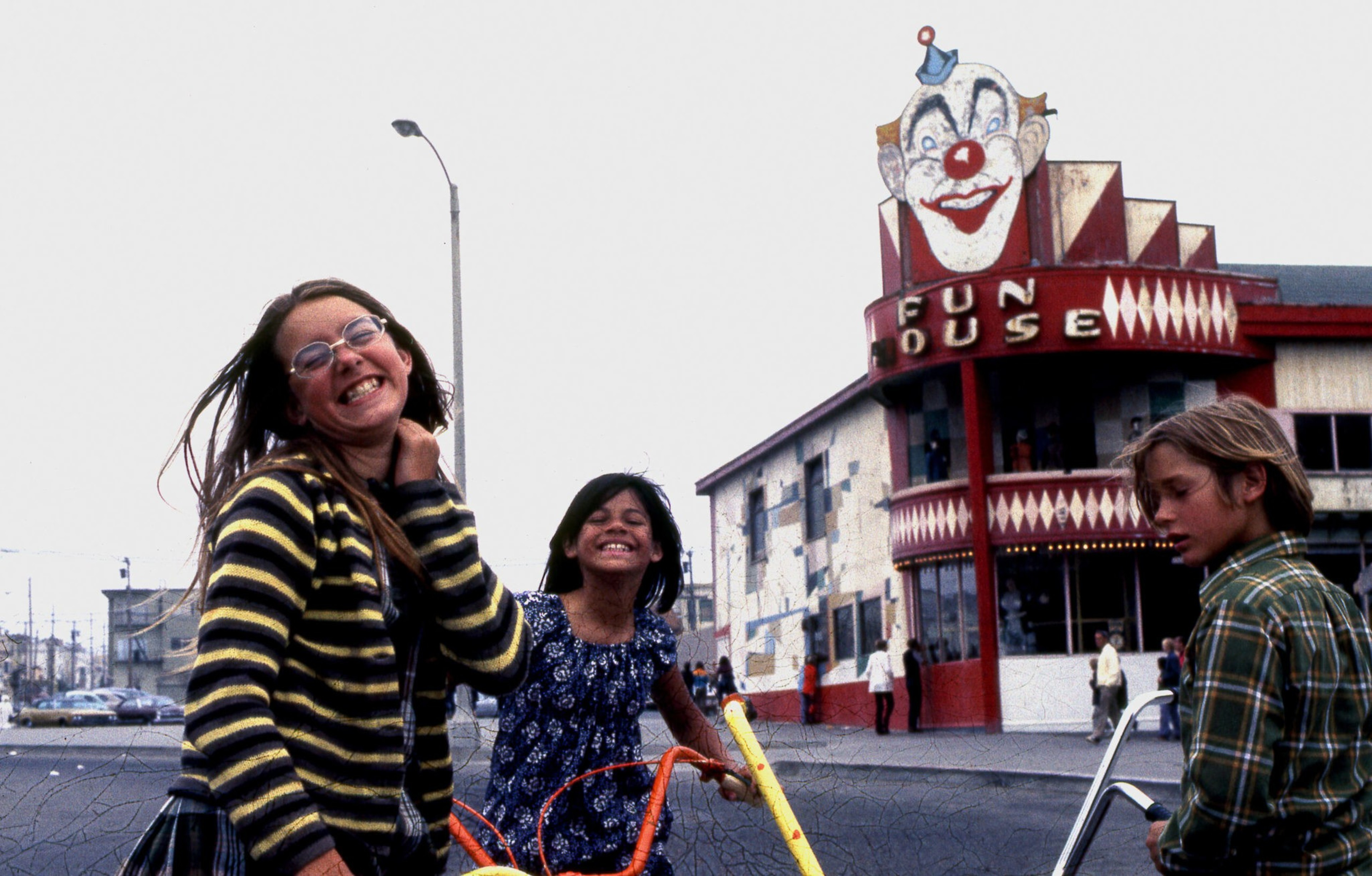In Greek lore, water nymphs or “naiads” presided over rivers, lakes and streams. And local history tells us that American settlers may have named Naiad Cove—the small bay at the foot of Sutro Baths’ ruins—after these mythical Greek figures because a spring-fed creek flows into the sea there (opens in new tab).
A new exhibit now showing at the nearby Museum at The Cliff (aka the Cliff House) also takes its name from the cove where the baths’ vestiges still rest—and inspiration from Greek mythology.

Curated by Nicole Meldahl, executive director of the nonprofit Western Neighborhoods Project (opens in new tab), and John Lindsey, director of The Great Highway gallery (opens in new tab)—in partnership with ACT Art Conservation and with support from the Golden Gate National Recreation Area’s Park Archives and Records Center and the Global Museum at SF State—Naiad Cove (opens in new tab) explores the history of three landmarks that defined the western edge of Lands End for decades: Sutro Baths (opens in new tab), the Cliff House (opens in new tab) and Playland-at-the-Beach (opens in new tab).
The exhibit features photographic prints and reproductions as well as dozens of artifacts that the Western Neighborhoods Project rescued for the sake of historic preservation at auction (opens in new tab) from the Cliff House restaurant’s closure at the end of 2020 (opens in new tab). The most notable pieces in the exhibition include an early 20th-century wooden bear sculpture from the Black Forest region of Germany that used to greet visitors to the Cliff House, the iconic Sheriff C.U. Soon cowboy from Playland, hand-painted signs by artist Reino Niemela from the beloved amusement park, and a pair of “porcelain ladies,” once believed to be Grecian “muses,” that used to hang in the Sutro Baths.

And like mythology itself, the line between history and legend can be blurry at Naiad Cove. But that’s part of the appeal of the Cliff House and its environs—mystery and intrigue are just about everywhere you look.
Take for example a carousel horse on display, which is “attributed” to Playland-at-the-Beach.
“We haven’t confirmed that, nor can we deny it,” Meldahl said of the origins of the horse. All that it’s known for certain is that the horse was donated to the Hountalas—the family that operated the Cliff House property from the 1970s to the restaurant’s bitter end. “But there’s no paperwork. There’s no documented provenance. … So research is ongoing…”
But in Meldahl’s view, the tales surrounding an object can be just as valuable as its actual history.
“We’re OK with telling you what the stories are that are connected to this piece because we think that’s just as important as the things we can prove,” Meldahl said. “The things that people have come to feel about these pieces, factually correct or not, are part of its history now.”

Even gun-toting Sheriff C.U. Soon (which undergoes conservation treatments every Saturday for the public to view) and the so-called porcelain “muses” have cloudy histories. For instance, Meldahl has a theory that the sheriff, once perched on the roof of a building at Playland and visible from the Great Highway, was created by Disneyland and Santa Cruz Boardwalk ride designer Laurence “Laurie” N. Hollings, because the cowboy bears similarities to drawings of characters Hollings did for San Jose’s defunct Frontier Village (opens in new tab). Hollings was living in the Bay Area at the time and had a history of working for the Whitney family, who once owned Playland.

“So I can’t prove it, but it feels right,” Meldahl said. “I’m hoping, pardon the pun, that one day we’ll have the smoking gun that tells us, ‘Yes, this truly is correct.’”
As for the “muses,” they may actually be well-dressed Grecian ladies.
“We were working under the assumption that they were muses,” Meldahl said. “But the more I looked into it, the more I realized that if it’s the nine muses from Greek mythology, they would each have some signifier that told you which muse they were, like a harp.”
They also may not be as old as first suspected, nor is it likely that they were commissioned for Adolph Sutro, as previously thought, Meldahl explained.
“The story goes they were commissioned in the 1890s for Adolph Sutro (opens in new tab) and his baths,” Meldahl recounted. “That seems unlikely. Adolph Sutro tended to buy things at auction or out of a catalog. Like all of the beautiful Greek statuary that used to be up at Sutro Heights (opens in new tab)—literally all out of a catalog.”

Meldahl says that, according to the Western Neighborhoods Project’s conservator, the porcelain ladies’ materials and how they were made do line up with the 1890s timeline, but the first photos of the Grecian women in the baths date back to the 1940s.
“So in terms of verifiable history, we can only really place them there that long ago,” she said.
But what is history without a little imagination? To fill in the gaps lost to time, Naiad Cove features immersive audio design by Andrew Roth (opens in new tab), which is meant to simulate the sounds of swimmers splashing in Sutro Baths, diners clinking cutlery during the Cliff House’s heyday and people squealing on roller coasters at Playland. You can even take a “ride” on Playland’s famed Diving Bell (opens in new tab) in the freezer of the Cliff House’s kitchen.


You’re also invited to take a seat at the Cliff House bar and imagine what it would have been like to be a fine lady lunching at the counter during the 1910s, a sad mourner dining during the 1920s, a young woman celebrating her college graduation in the 1940s, a site-seeing tourist in 1949, or a soldier enjoying a homecoming meal after returning from World War II. A queue of Cliff House menus, period-style place settings, an undone napkin, and a glass with lipstick on the cusp help set the scenes. There’s even a Cliff House maître d’ bib autographed by actor Cary Grant on view.

“This experience has made me realize how much historians and bartenders have in common,” Meldahl said with a chuckle. She typically posts up at the bar on the weekends to interact with visitors. “People will walk up, everyone tries to order a drink… But then they start telling us their stories and… that’s what people do in bars. … So because it’s been laid out so intentionally like this, people are treating it in a way that they would have at the [Cliff House] restaurant.”
There are also plenty of interactive activities for kids and kids-at-heart, including spaces where you can flip through books of historical photos, recreate a Cliff House meal with play food, write a postcard to the Western Neighborhoods Project or create art inspired by the surrounding landscape. A selection of contemporary photographs of the Lands End area, curated by Lindsey, is also on display as well as an illuminated work by the studio of Jim Campbell (opens in new tab) (the artist behind the spectacular LED display atop the Salesforce Tower (opens in new tab)).
In the end, Meldahl hopes that the “flexible historical exhibition,” as she describes it, inspires visitors to have conversations with the past and fun with history.

And while the stories underlying the Cliff House, Sutro Baths and Playland’s artifacts may change with time and further research, what hasn’t changed as much is the rugged coastal land that sits beneath their historic imprints.
“When you look at the whole history of Lands End… it really puts you in your place,” Meldahl said, waxing philosophically. “We’re temporary. We’re here for a blip, but the land and this special cove, this Naiad Cove, it will outlast us all. … I like to say that the naiads are still very much here.”
The Museum at The Cliff’s ‘Naiad Cove’ (opens in new tab) is on view Saturdays and Sundays from 11 a.m. to 5 p.m. through Aug. 21. Reserve a timed ticket online at eventbrite.com (opens in new tab). Admission is free.
